My Cagiva Alazzurra 650 GT 1986
With less than a week left before the Swedish Ducati Club should go to visit the TT-races at Isle Of Man in 1987, my Ducati 900 bevel twin had an ignition problem. I arranged the trip for about 25 of the club members, so it was important for me to have a bike ready for the trip.
I started checking out motorcycle ads. The year before, I had visited the Ducati factory where they just produced a batch of Cagiva Alazzurra 650 GT. It was simply a Ducati Pantah with a different design and name. The GT meant it had dry clutch, a Ducati F1 engine with smaller cylinder diameter. Alazzurra had been developed quickly by Cagiva in Varese in 1983 when they signed an agreement with the state owned Ducati to obtain exclusive rights to buy Ducati's motorcycle engines.
Ducati would become a pure engine factory that, in addition to motorcycle engines, also produced marine engines, diesels for cars for VM Motori and Ferrari V8’s to Lancia Thema 8.32.
By using a the chassis from Ducati Pantah, the bike could be presented already the same year. Production started in Varese in 1984 and the following year Ducati Meccanica was purchased by Cagiva and some production was eventually moved to Borgo Panigale where production had dropped to a few thousand motorcycles per year. The Alazzurra was not a success despite a low price compared to Pantah. The last ones were put together in 1986, but it took several years before the last ones were sold around the world.
So I started looking for an Alazzurra. A friend found an advertisement on a 650 GT in a magazine and said: - Was this the kind of thing you were looking for? I ripped out the ad and called the seller. A demo bike, 1920 km’s on the clock. I bought it and off we went to Isle Of Man.
Once on the Isle Of Man, the members laughed when the chairman of the Swedish Ducati Club showed up on a Cagiva! Someone said it looked like a duck mum with her kids in tow when I took the lead, straight in the back, with all the forward-leaning Ducatists in tow! Duck mum? No, this couldn't continue.
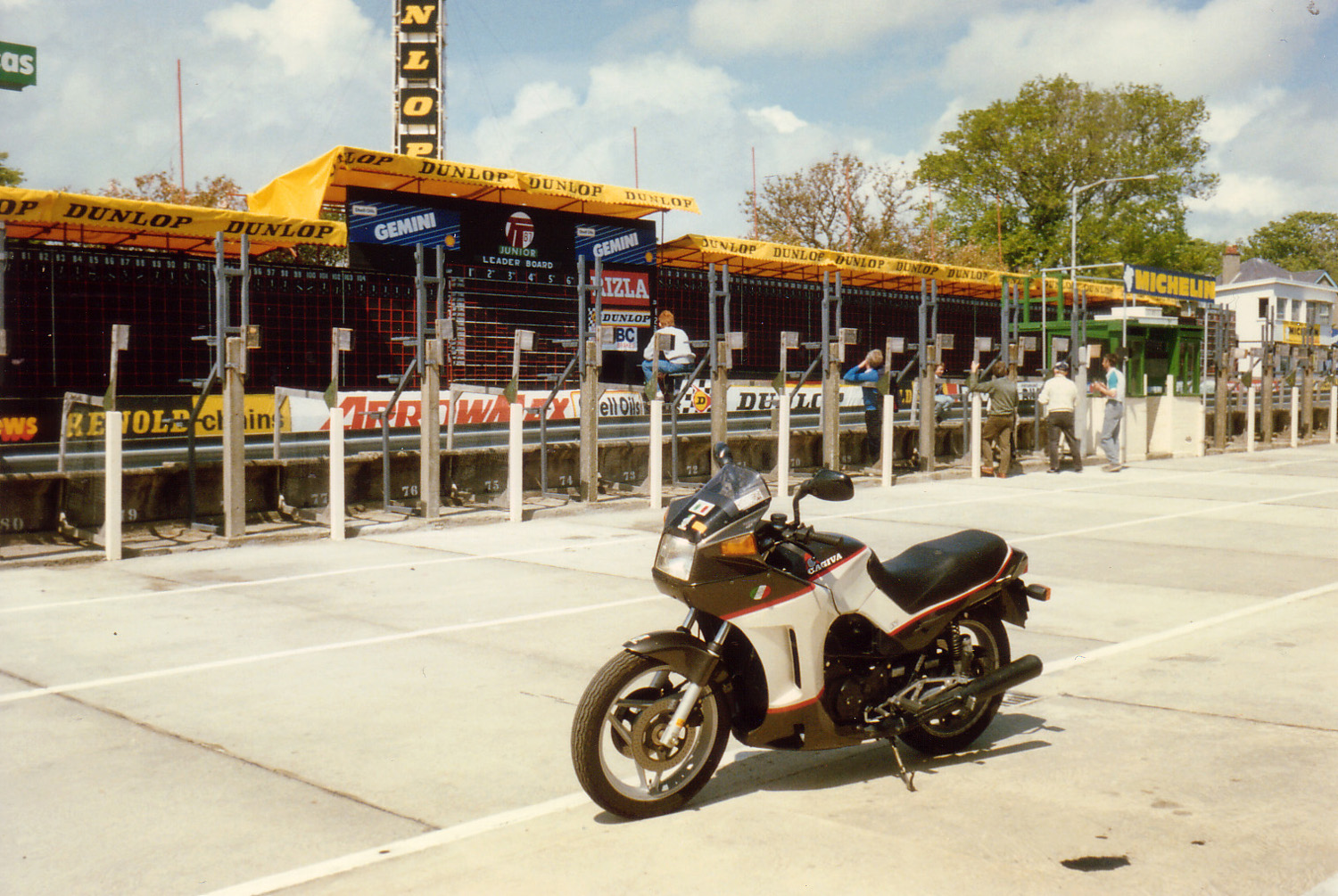
At the grand stand, Isle Of Man
Cagiva Alazzurra was a pretty good motorcycle. You can see it as an improved Ducati Pantah. The design was also successful. The GT, on the other hand, was not pretty with its full fairing, well I didn’t like it. One thing, however, was worse compared to Pantah: the brake calipers. For some reason, the small Brembo P04 and 260 mm brake discs were better suited to a 350. A total of just over 1000 Alazzurra were manufactured, of which an estimated 400 were the 650 GT model. Already when I bought it I decided to rebuild it. The Cagiva would become a Ducati, which it really was, and I would never again be called a duck mum!
The following winter I bought a NCR-style aluminum tank. It was made to fit a bevel Ducati, so the bottom had to be cut out and welded. I also got a 900SS fairing and seat (which I cut at the back) as well as a NCR front fender. In addition, I got a pair of Öhlins shock absorbers. They were actually to some Yamaha and were about 10 mm longer than the original. I decided not to touch the engine, partly for reliability and partly because it ran well as it was.
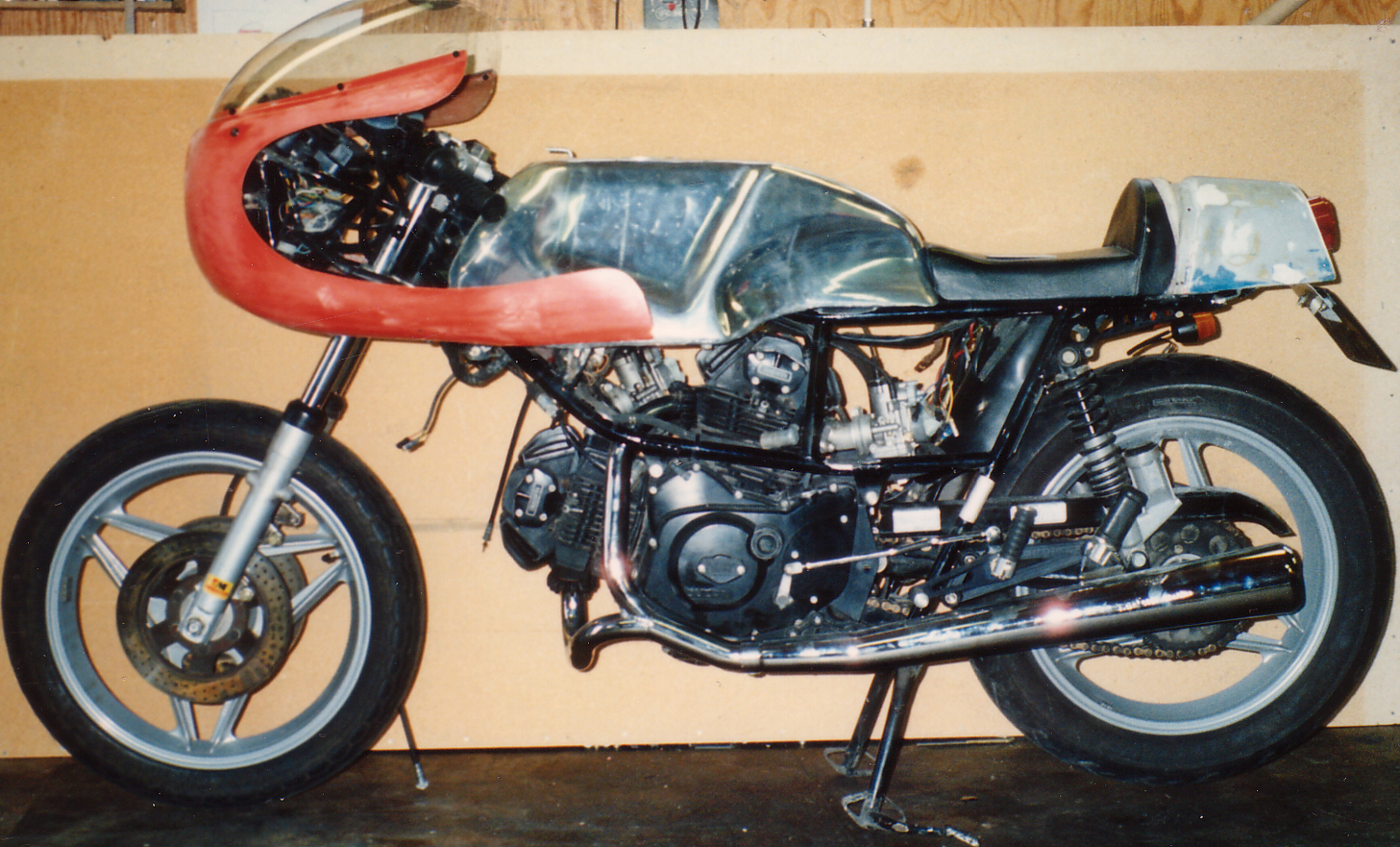
I copied this photo in black and white and painted it by hand to find the right coloring
The first longer trip in the summer became very long. It was six thousand kilometers through Denmark, West Germany, the Netherlands, Switzerland, Italy, Austria and back home. As we passed the top on the Brenner Pass (a part of the alps between Austria and Italy) and were on our way down, a few weaknesses emerged that I needed to address later.
.jpg)
Finally ready for the roads
The brakes became overheated and the brake discs warped. Another weakness was that the bike swayed a bit in high-speed curves. Otherwise it went like a dream. Back in Sweden I got the solution to the weaknesses by buying a 38 mm Marzocchi racing fork together with 300 mm ISR brake discs and large Brembo P08 brake calipers from an NCR-Pantah racing bike. Mounting this got to be a winter project and my Alazzurra was perfect after that. The sway in high-speed bends disappeared and the brakes got a good bite.
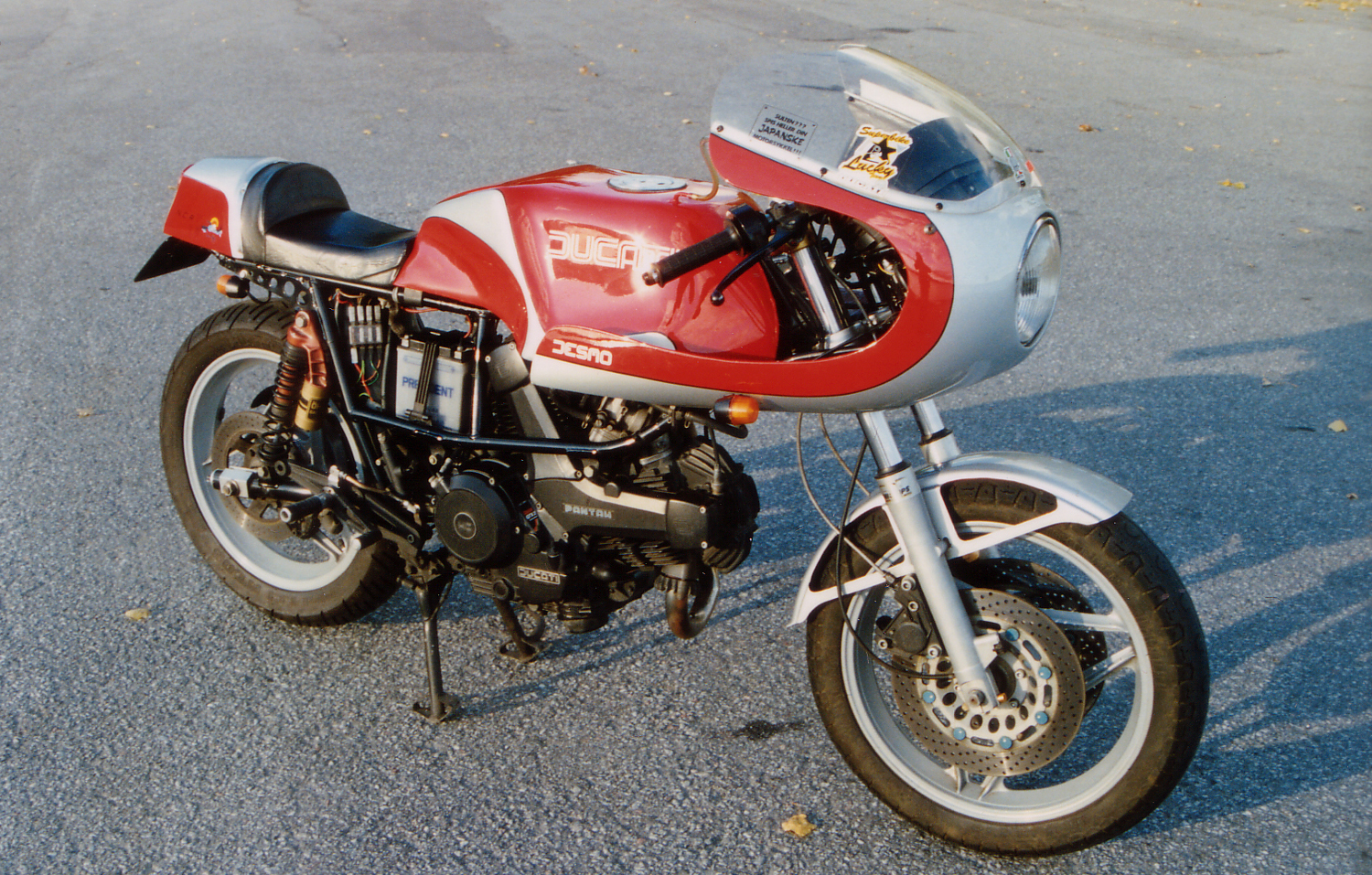
1989 with a new 38 mm racing fork, 300 mm ISR disc rotors and P08 calipers
I had run 50,000 km’s with the Alazzurra when I decided to sell it in the fall of 1991. I liked the bike but wanted something new. I was aiming to buy a Bimota DB1 but regretted after looking at one. It eventually became a 750 SS in 1991. It would prove to be a crucial choice. With a DB1 I couldn't have offered the girl, who would be my wife, a ride and we would probably be unknown to each other today!
The Alazurra had been amazing. 50,000 km’s with only one fault, a broken charging relay. In the fall of 1991, the Alazzurra got a new owner. The years went by. It became a family formation and we moved to Gotland, an island in the Baltic Sea. In a shed, my 750 SS was largely unused. In the spring of 1997 I got an idea. The owner of the Alazzurra might have been interested in a switch and I could get some money in between. It felt less bad if there was a lower value motorcycle in the shed. I contacted the owner and it was a deal!
He who bought it from me had a crash where a traffic island was involved if I remember correctly. The rear rim had to be replaced as did the Conti system. What's worse was that the front fork was replaced with an old 70's Marzocchi that was too short and with flaking chrome.
Extension of the house and a growing family meant that even the Alazzurra had to stay in the shed. The driving pleasure was also gone with a front fork that had total lack of damping. Probably there was no oil in the fork, but I really hadn’t the time or desire to fix it when probably the sealings were completely worn out. We were in need of another car and I sold the Alazzurra again, almost on the day ten years after I sold it for the first time.
The years went by. We moved to Nyköping in the Swedish mainland in 2007. I bought a Ducati 750 SSie the same year. Sold it after two years after having to brake hard to avoid hitting wild animals as deers, moose and wild boars. The driving pleasure was gone. The children became adults and began to move out. Panic, I must have a hobby! Wondering if I thought it would be fun with a motorcycle again? Perhaps. If I didn't think it was so fun to drive, I could spend time in the garage which is fun, right? Wondering what happened to my Alazzurra?
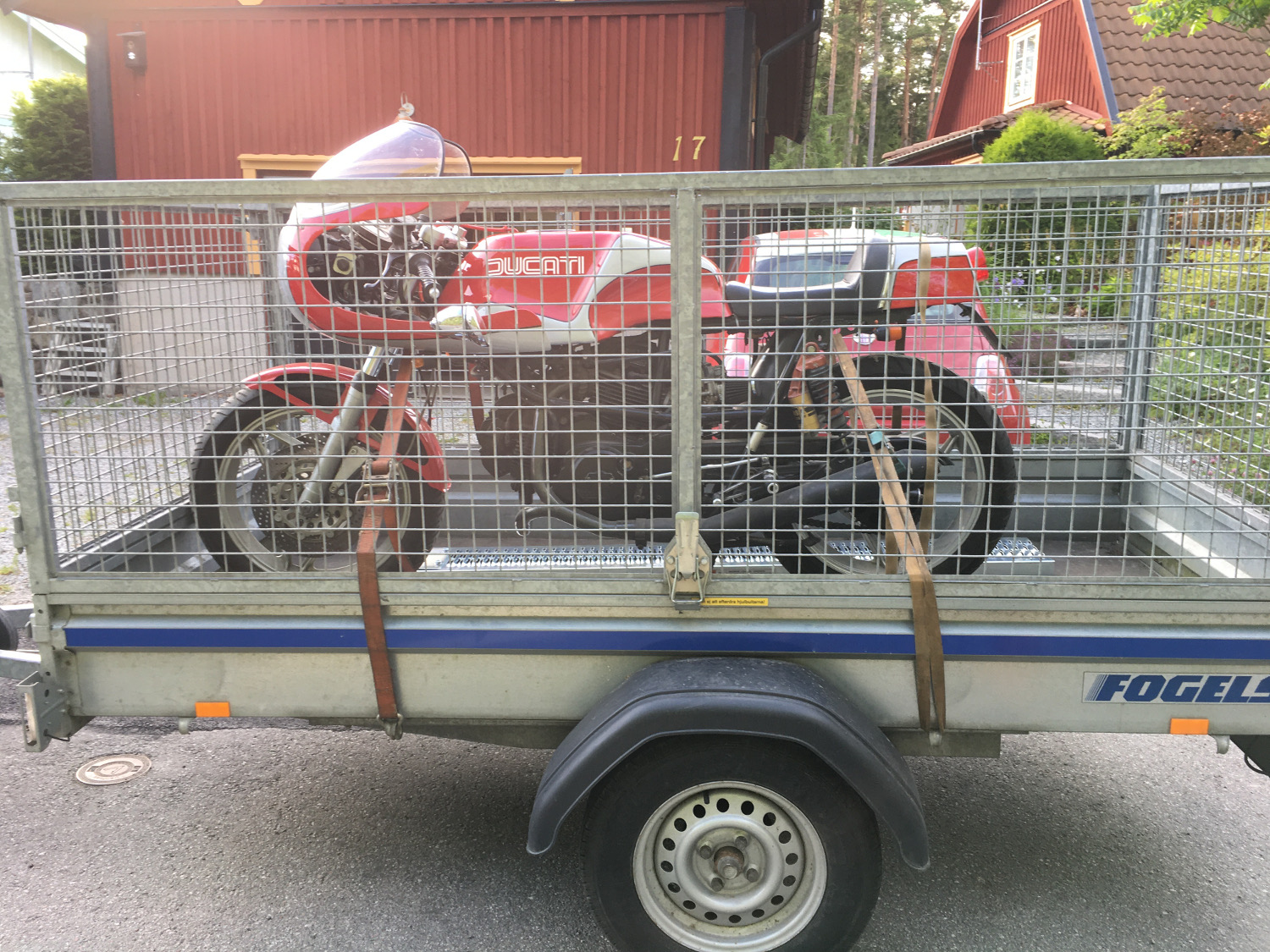
Mine again for the third time!
In April 2017 I did a search for the bike in the vehicle register. Got a hit and the owner turned out to be a guy in his upper 70’s. To make a long story short he sold it to me a couple of months later. It looked just like when I sold it in 2001 and it even had the same rear tire from 1997! Once at home again, cam belts, bearings for the cam belts, oil, filters and some other small things were ordered. It had not been running for four years, so the test start had to wait until after service. At first things didn't go so well. It leaked gasoline from the rear carburetor. It was the float that got stuck after the car transport. After knocking on the float, the leak stopped and the engine started. An amazing feeling! MOT Inspection went smoothly despite the inspector's confused expression that it is a Cagiva is in the registration documents and Ducati signs everywhere on the motorcycle!
There were no longer trips in 2017. The longest was about 50 km’s. After that I found out that the rear tire was 20 years old! When I got the new tires and it was autumn.
During the winter I got a Marzocchi M1R front fork and new brake disc rotors which were purchased from Italy. The front fork came from a Gilera 250 and had to be modified a bit to fit. The holes for the front wheel shaft were too small and had to be reamed. Once in place it got really good and gave a boost to both appearance and road keeping. The replacement of the fork and brake discs cost more than I gave for the motorcycle, but it was worth it.

M1R 38 mm and disc rotors from Motoofficina Leoncini.
The summer of 2018 was hot and I rode the bike enough to note that I still find it fun to drive and that the Alazzurra is a fantastic motorcycle. I have decided not to sell it again. I think…

2018 with M1R fork and Lenoncini 280 mm disc rotors
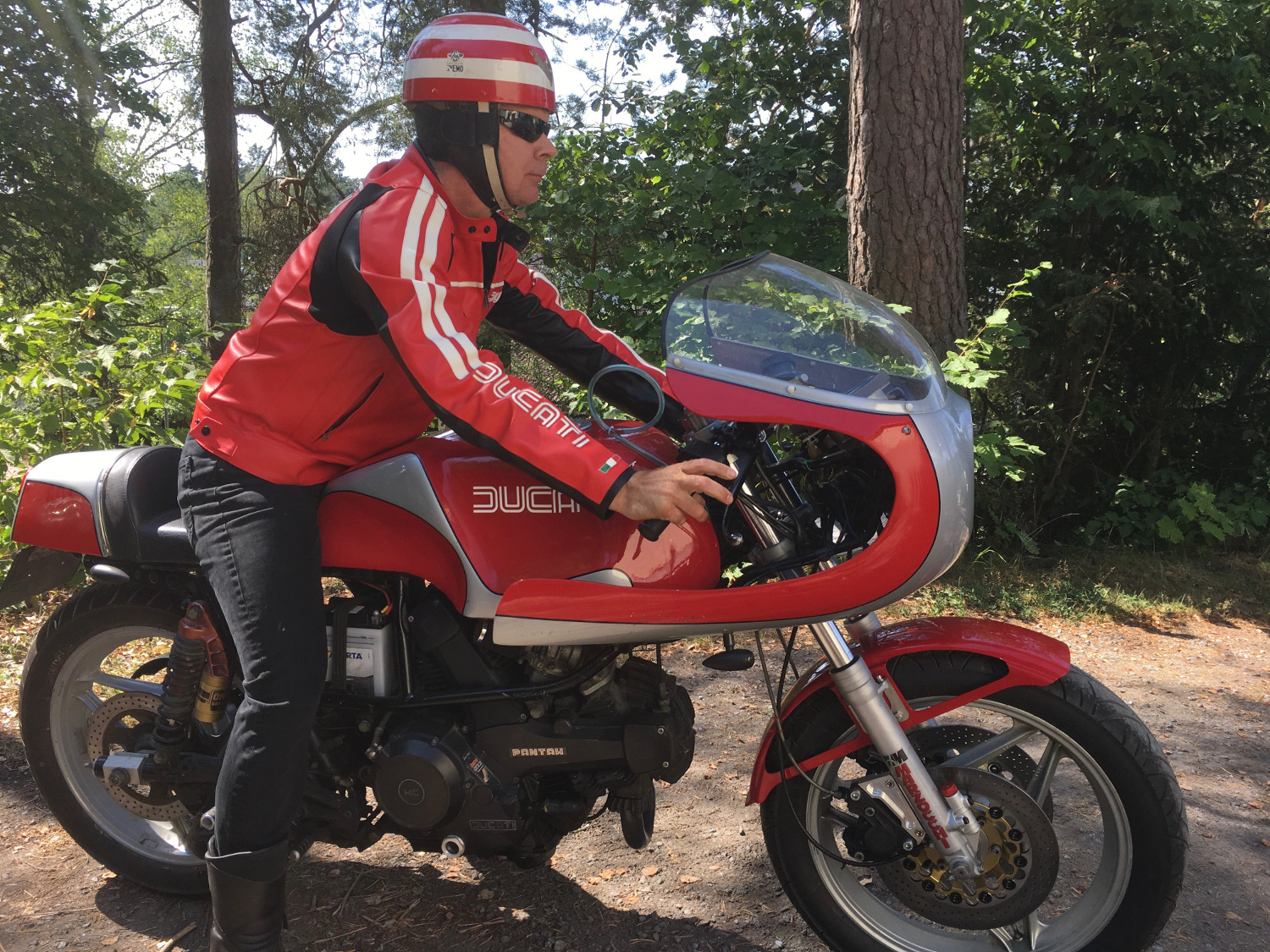
Ready to go again!
For 2019 I would be out in good time. There were three things I wanted to fix. The first was the shock absorbers. They were well used already when I bought them in 1987, and now basically all the oil and gas had leaked. I submitted them for renovation in January to be able to have them back in advance of the season. The other thing I was going to fix was the dashboard. Someone had replaced the instruments. There was nothing wrong with the instruments, White Veglia, but they sat poorly fixed in a home-made instrument panel where the control lights hung more or less freely without any symbol telling what they indicated. I decided to make a new dashboard. I created it with the help of CAD and cut out cardboard models to fit. I had to make it pretty big to cover all the cable trunks that were under the cover. At the same time it was a puzzle to lay the instruments so that they did not hit in any cable trunk. The third thing to fix was the front brake calipers. I ordered a renovation kit and it was easily fixed. At the same time I ordered new brake hoses. Delivery went fast and smoothly.
It was worse with the dashboard and the shock absorbers. I gave the job for laser cutting and bending to a company that I use in my job. They got problem with the laser cutting machine and when they were done they had bent the panel in the wrong direction. It appeared, properly bent, in early July. It was made of stainless steel and looked quite bulky. That's why I bought a sheet of self-adhesive plastic that I cut to make it look smoother. The shock absorbers appeared in mid-July. But the one waiting for something good ... They look like new!
So what will I do next? Hopefully I will just ride the bike and enjoy myself. The next thing I will do, I don’t know when, is to repaint the frame, probably in the same silver color as on the side of the tank. I will also change the dashboard again. I think I will replace all clocks with a multi function tacho/speedo.
It was 2020 and I did not intend to do much with my motorcycle other than ride. But then an image appeared in my FB feed of someone who had just replaced the hydraulic clutch line to a steel braided clutch line on a motorcycle similar to mine. I really needed to change mine that has been sitting there since it was installed at the Ducati factory in June 1986. It's as fun to working on as to drive, I think. But it became more mechanical work than I had planned.
I ordered a new clutch line from the same company in England where the guy in the FB feed bought his. It arrived after a couple of weeks and during the holidays it was time to assemble the new clutch line, a simple operation. When I dismantled the old one, I noticed that the threads were not worn in the aluminum cover that contains the slave cylinder, which in turn pushes in the clutch when you pull in the clutch lever. Care was required when assembling the new one. I took the opportunity to paint the clutch cover in silver when I still had it removed. It turned out really well.
The new clutch line fit perfectly and I tightened the banjo bolts at the ends carefully so as not to further destroy the threads. Now it was just a matter of filling up with hydraulic fluid and bleeding the system. To my great disappointment, I saw that it leaked in between the banjo fitting and the clutch cover. I tightened the banjo bolt a bit more and took a fairly long test ride. My joy over the freshly painted clutch cover was transformed into despair when I got home and discovered that hydraulic fluid had leaked out again and created two streaks on my newly painted clutch cover.
When I disassembled the banjo bolt in the clutch cover, the threads followed up. I brought the cover to an engine workshop that put in a new insert thread. Now the problem would be solved. I repainted the clutch cover and reassembled everything. Now I could tighten the banjo bolt a little harder. Everything seemed to work and I went out again on a trip on the small roads nearby. When I got home again, it had once again leaked hydraulic fluid, which destroyed the paint again.
Maybe the new thread had ended up a little bit in a wrong angle? I unscrewed again and put it back with double copper washers which should solve the problem. No, unfortunately it was the same result. When I disassembled again, I checked all surfaces carefully. The flat surface of the clutch cover that would seal against the banjo coupling was not perfectly flat. With the help of a file, the surface became perfect. At least now the problem was solved. Or? No, it was still leaking!
I had examined the lower end of the new clutch line with its banjo fitting visually but had not seen anything wrong. There couldn’t be something wrong with the new clutch line, could it? I checked again but found nothing wrong. Then I turned the clutch line upside down to see if the error moved. The banjo fittings were differently angled, but could be assembled for a test. I filled up with hydraulic fluid, bled the system and tested. I can promise that I have become an expert at bleeding the clutch by now. Guess where it leaked? Right! Now it leaked from the banjo fitting up at the brake lever! When I disassembled the hose again, I discovered a barely visible crack in the banjo fitting that had probably been there from the beginning.
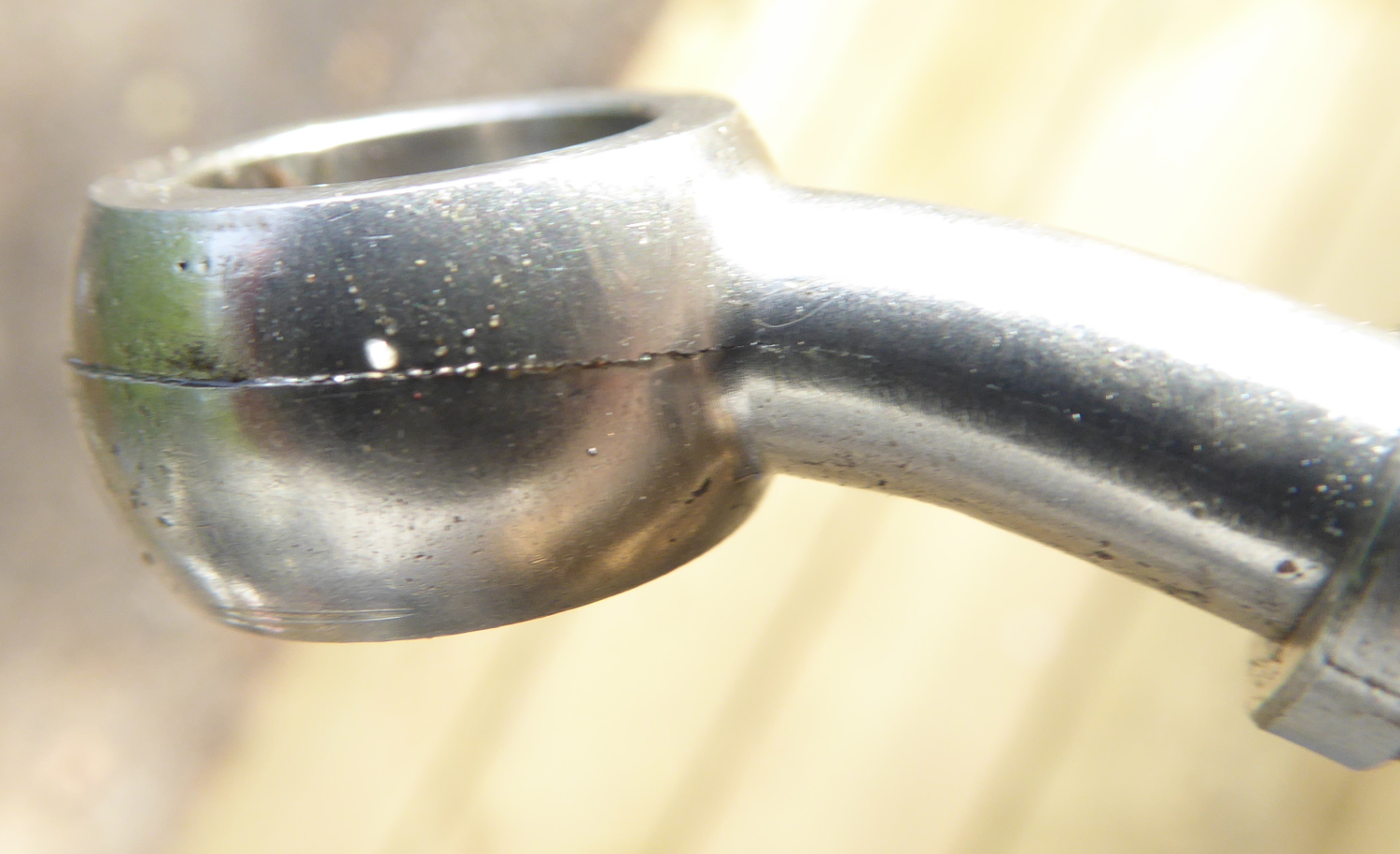
I sent an email to the company in England with a short version of what I wrote here. They replied that they felt very sorry for what I had experienced and immediately sent a new one. While waiting for this, I bought paint remover to be able to redo the procedure from the beginning. I repainted the cover again and also took clear coat this time for a little better durability in case… Now with the new clutch line in place I took a test trip without the slightest leakage. Or?
Now the Alazzurra began to leak engine oil! I had noticed the oil leak for a while, but now it was so bad that it even smeared down the rear wheel. I had been prepared for oil leakage because the bike more or less stood still for several years before I bought it back. It turned out to be a shaft seal inside the drive wheel for the timing belts. Luckily, I had obtained special tools more than 30 years earlier which were now used for the first time and the shaft seal could be replaced. After this, the oil leak was gone. The last thing I did before store the bike for the winter was to buy another steel-braided line for the rear brake from the same company in England (how I dared). After renovating the rear brake caliper, I replaced the 34-year-old brake line with a new one. No leakage this time!
The Öhlins shocks before and after
First test drive 20 July 2019
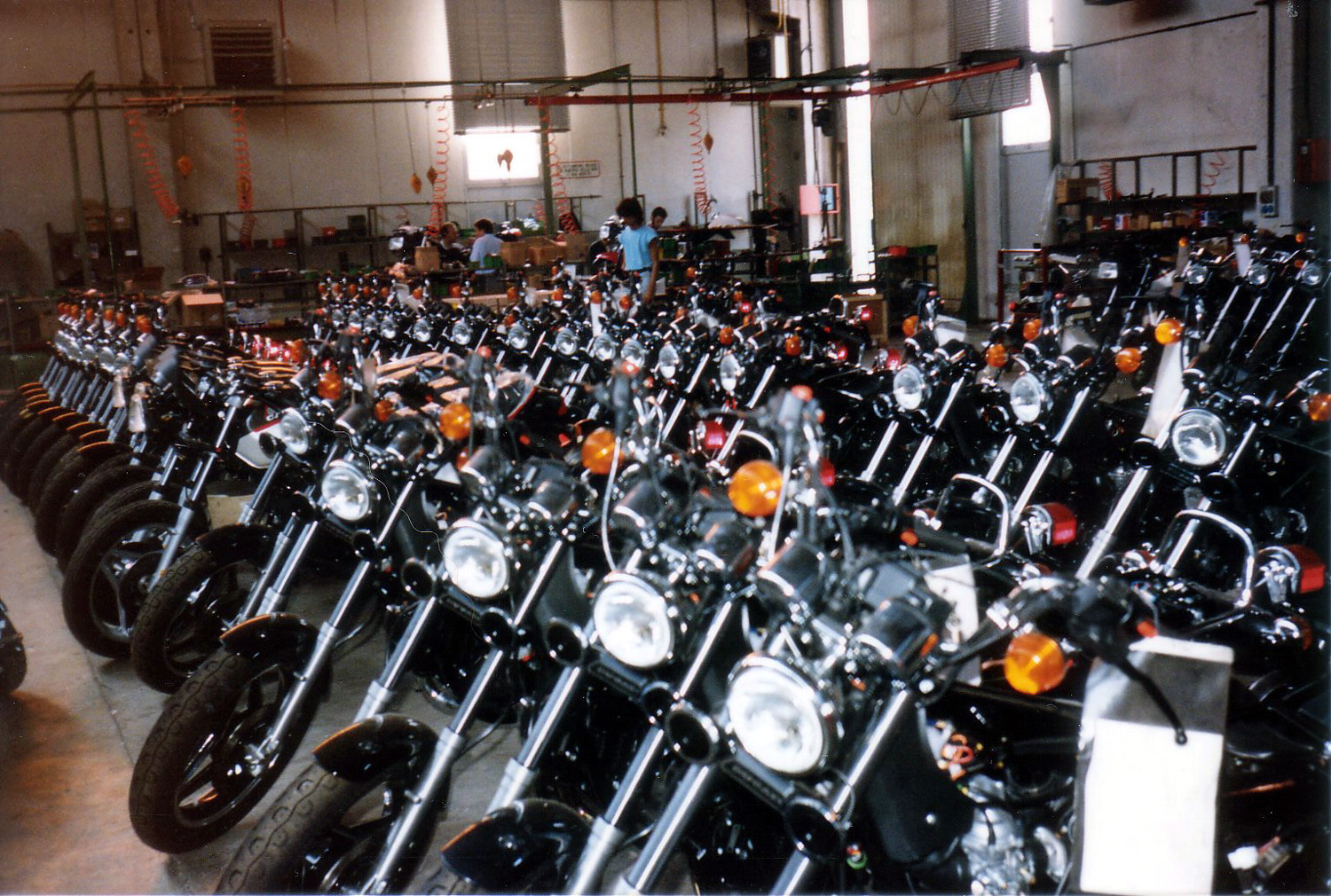
The Ducati factory, July 17 1986. There are at least three Alazzurra GT's among all Indianas
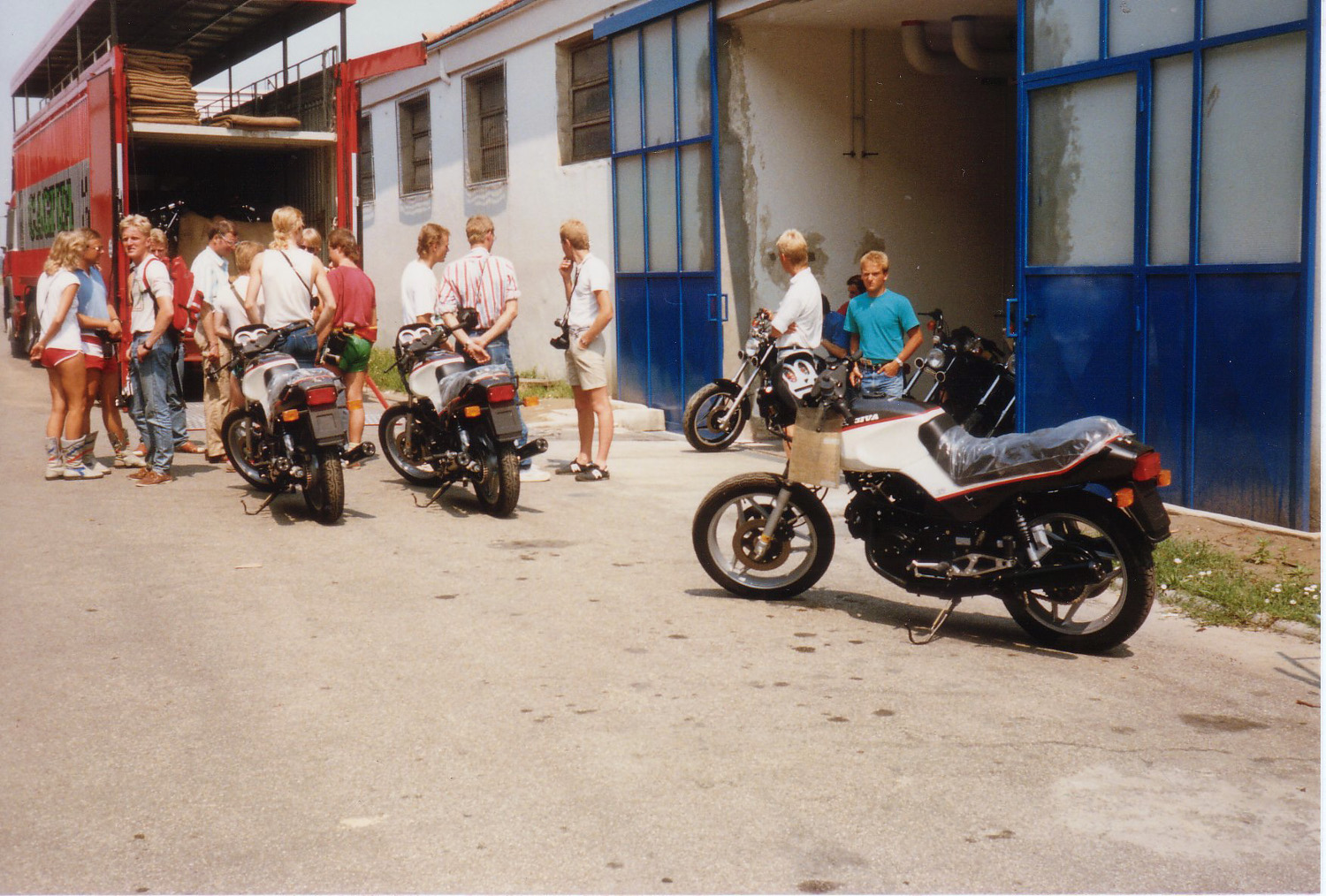
I didn't know then that maybe one of these bikes would me mine in the following year!
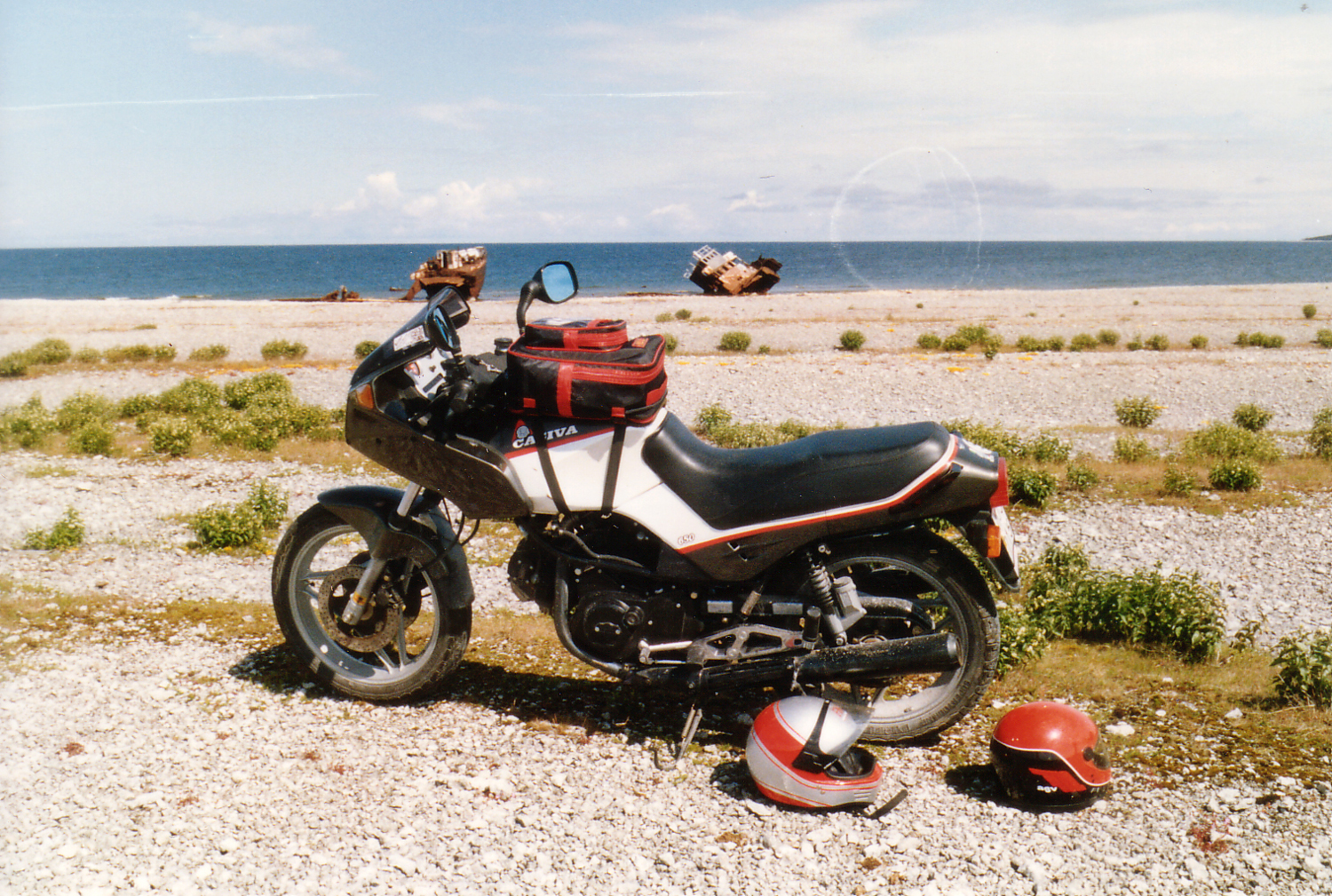
Soon it would be changed. I liked it better without the bottom of the fairing
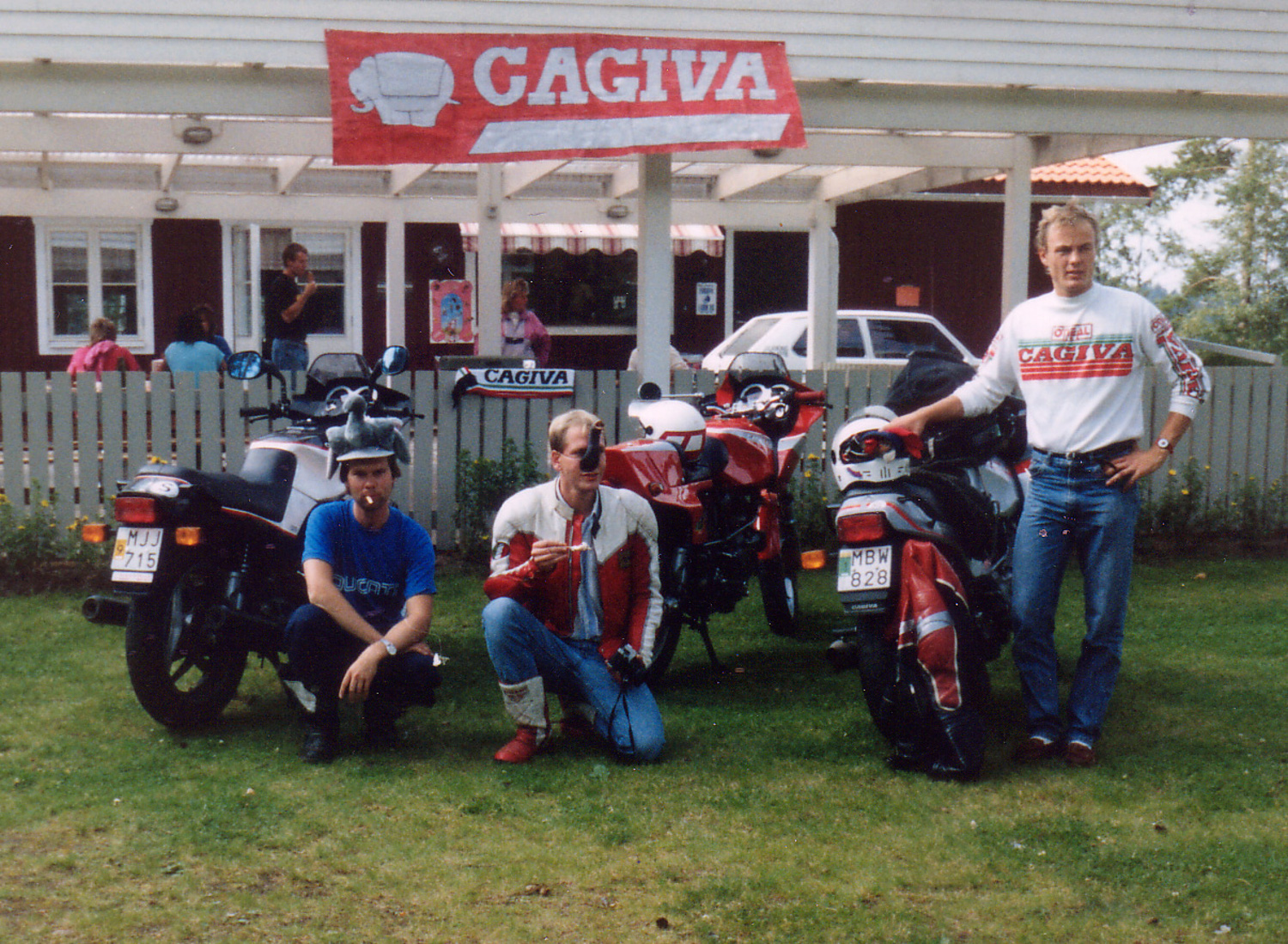
At the Swedish Ducati Club's annual meeting 1987.
.jpg)
Outside the mediaeval city Visby, Gotland
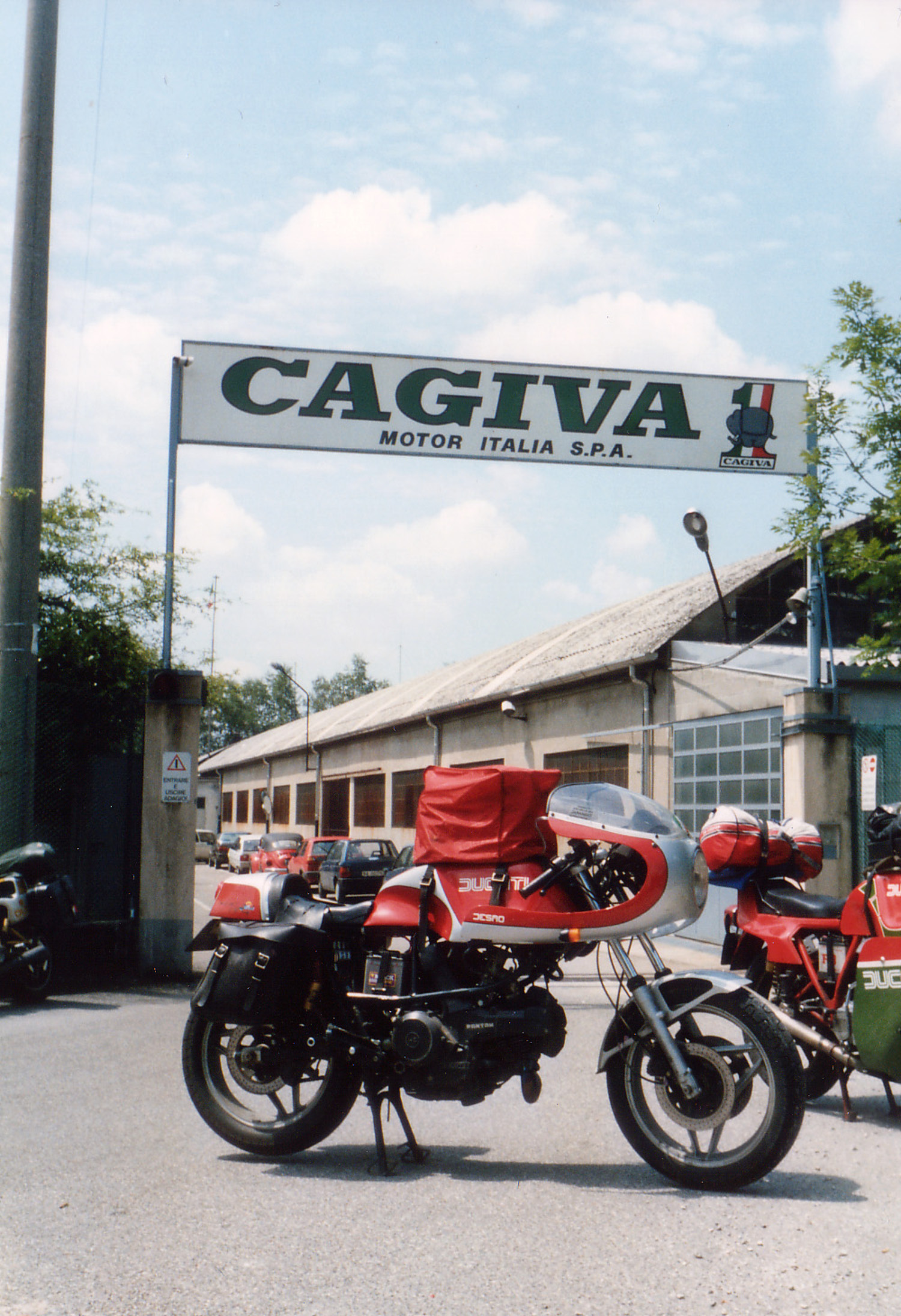
The entrance to the Cagiva Factory in Varese, 1987
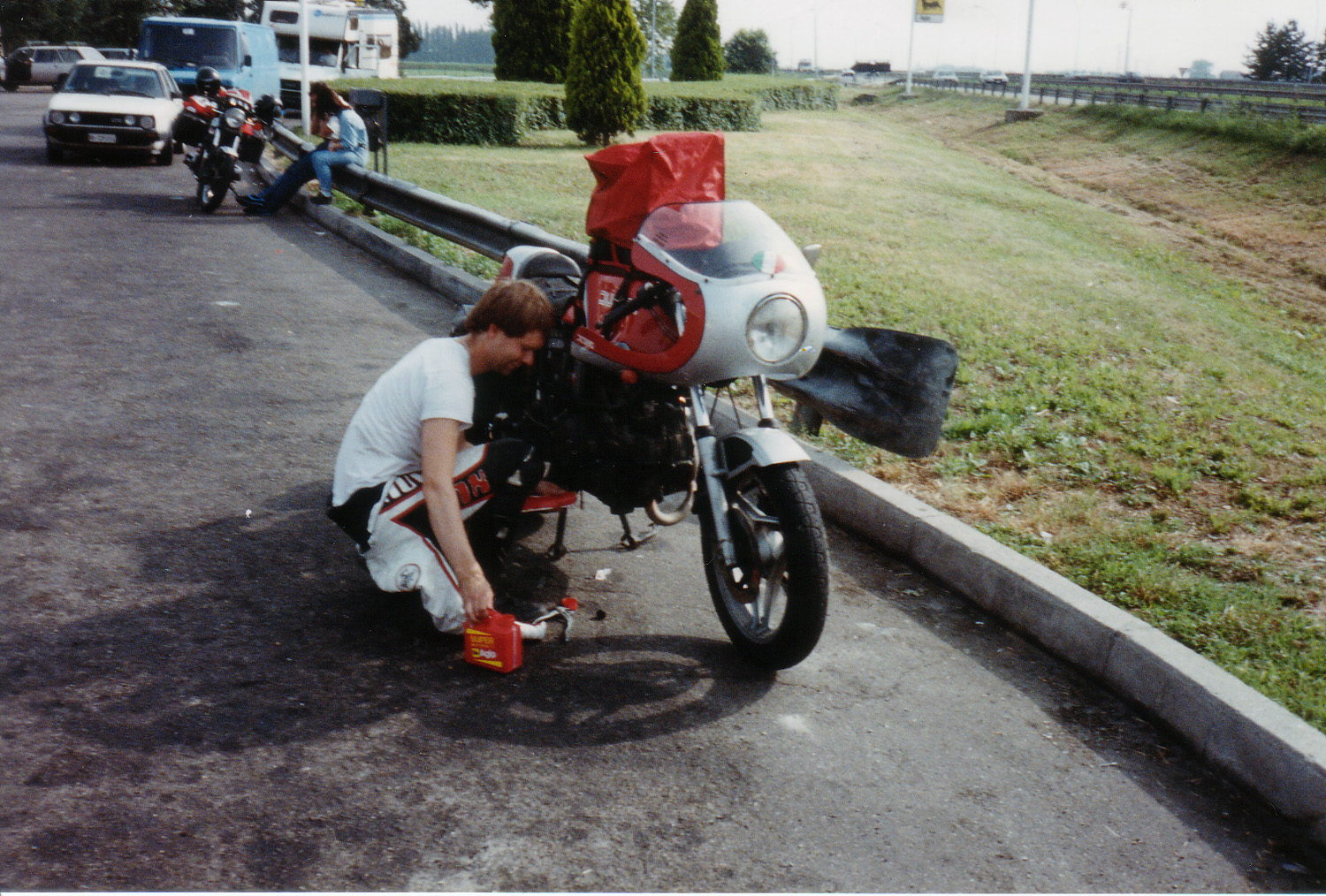
Adding Agip at a gas station in Italy in 1987
This is a photo from 2002, the 2:nd time I owned it

The holes for the front axle in the M1R had to be rimmed

A new dashboard. I think I will change it later to a single tacho multi-purpose gauge
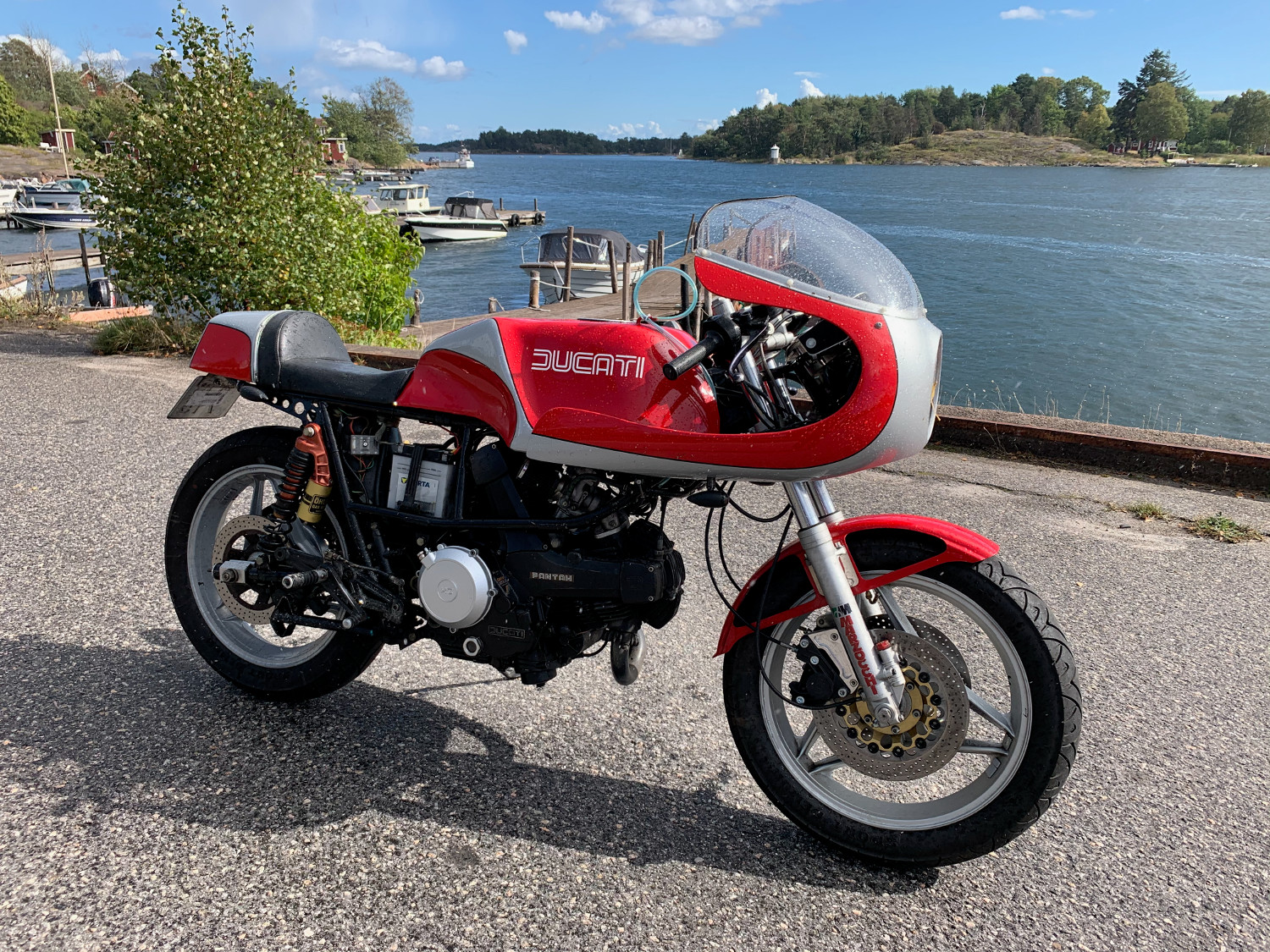
2020 after all the clutch line troubles
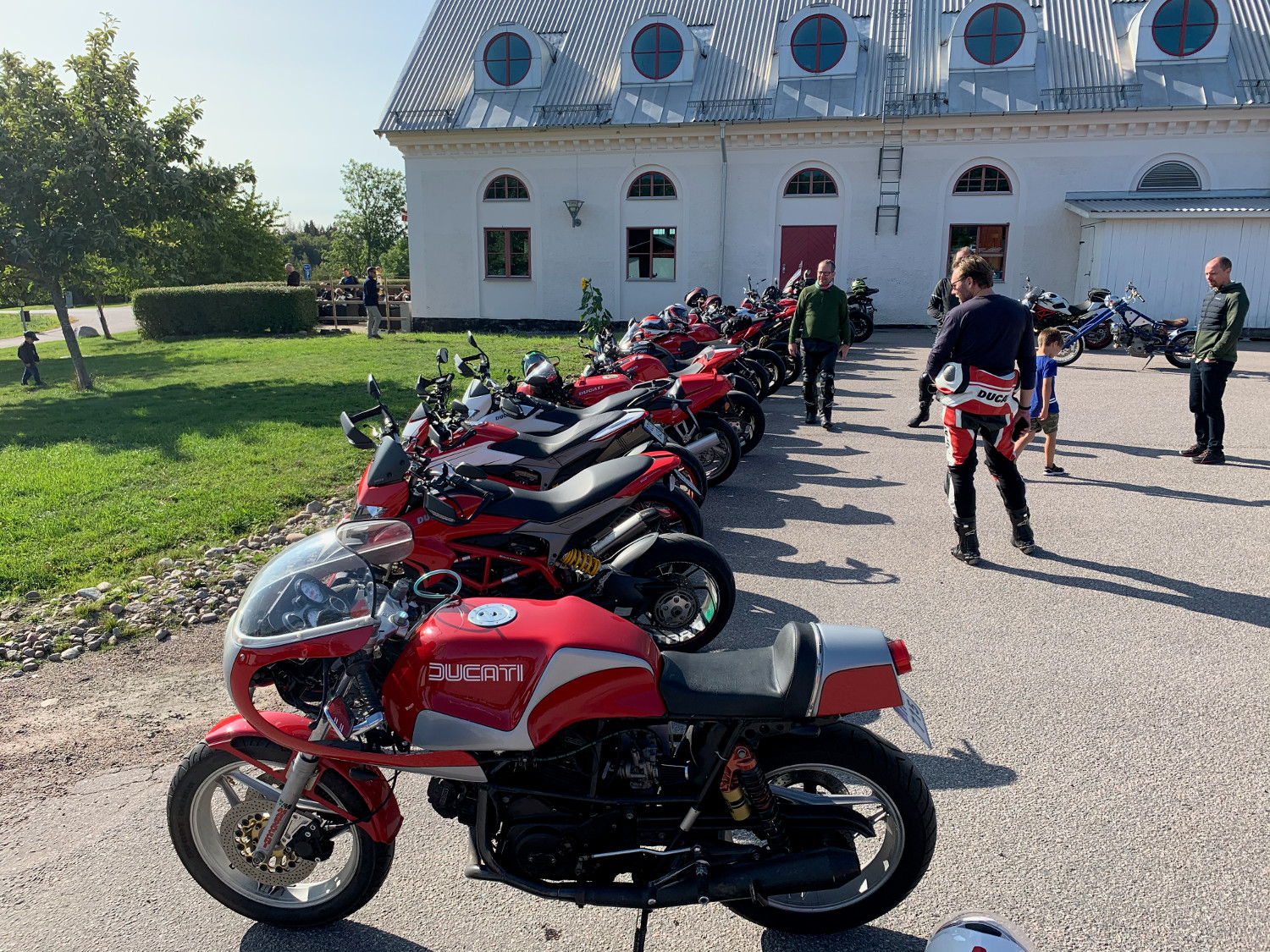
September 2020 with oil stain underneith
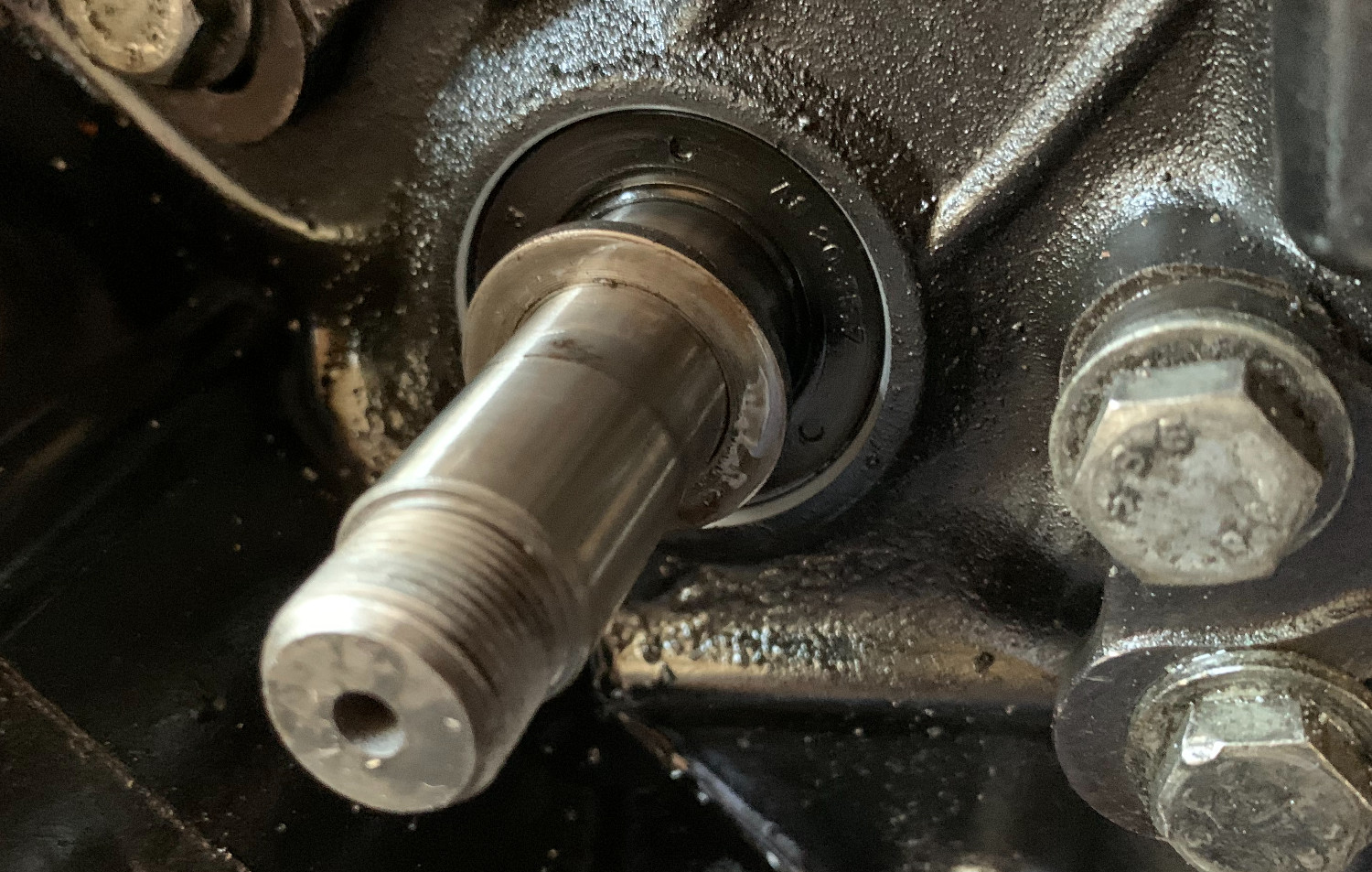
2020, faulty shaft seal